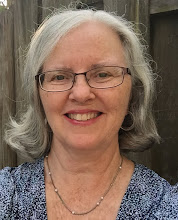Think again.
Eight candidates and their running mates have filed and qualified as gubernatorial candidates; 17 candidates have qualified to run for U. S. Senator. Not all the names will appear on the ballots because several are write-in candidates. But all the people listed below have taken the time to file the paperwork in order to be a legitimate candidate. Many of the people listed below have paid thousands of dollars in filing fees to the State of Florida.
Oughtn't we at least recognize their initiative and courage?
[Thank you to Pinellas County's Supervisor of Elections, Deborah Clark, who makes this information available -- with links to each candidate's filing information on the Florida Supervisor of Elections' site.]
In alphabetical order, then, which is the NOT same way they will appear on the ballot, the gubernatorial candidates are:
- Peter Allen / John E. Zanni (The Independence Party of Florida / IDP), of Riverview, can be reached at (813) 671-3122. Allen paid the state a filing fee of $7816.38.
- Michael E. Arth / Al Krulick (NPA), from DeLand, can be reached at (386) 738-2230. Arth paid the state a filing fee of $5,210.92.
- Daniel Imperato / Karl C. C. Behm (NPA), from West Palm Beach can be reached at (561) 317-3210. Imperato paid the state a filing fee of $5,210.92.
- Farid Khavari / Darcy G. Richardson (NPA), from Miami, can be reached at (786) 286-6697. Khavari paid the state a filing fee of $5,210.92.
- Josue Larose / Valencia St. Louis (DEM / WRI), from Fort Lauderdale, does not list a phone number on the Florida Election Divisions' Candidate Tracking System page. No fee.
- C. C. Reed / Larry Waldo, Sr. (NPA), from Miami, can be reached at (786) 715-9338. Reed paid the state a filing fee of $5,210.92.
- Rick Scott / Jennifer Carroll (REP), from Naples, does not list a phone number on the Florida Election Divisions' Candidate Tracking System page. Scott paid the state a filing fee of $7,816.38.
- Alex Sink / Rod Smith (DEM), from Tampa, does not list a phone number on the Florida Election Divisions' Candidate Tracking System page. Sink paid the state a filing fee of $7, 816.38.
Write-in (WRI) candidates for U. S. Senate pay no filing fee. Candidates with No Party Affiliation (NPA) pay $6,960. Candidates with a party affiliation pay $10, 440 -- unless the candidate qualifies by collecting enough signatures on a petition. The 17 candidates for U. S. Senator and their email addresses are:
- Lewis Jerome Armstrong (NPA), from Jacksonville, can be reached at (904) 771-0809. Armstrong paid the state a filing fee of $6,960.
- Sue Askeland (NPA), from Stuart, can be reached at (772) 287-9178. Askeland paid the state a filing fee of $6,960.
- Bobbie Bean (NPA), from Sebring, can be reached at (863) 385-2229. Bean paid the state a filing fee of $6,960.
- Piotr Blass (WRI), from Boynton Beach, can be reached at (561) 523-170. No fee.
- Charlie Crist (NPA), from Tallahassee/St. Petersburg, can be reached at (727) 498-5806. Crist paid the state a filing fee of $6,960.
- Bernie DeCastro (Constitution Party of Florida/CPF), from Ocala, can be reached at (352) 867-8877. DeCastro paid the state a filing fee of $10,440.
- George Drake (WRI), from Orlando, can be reached at (407) 859-7191. No fee.
- Howard Knepper (WRI), from North Miami Beach, can be reached at (305) 948-3525. No fee.
- Carol Ann Joyce LaRosa (WRI), from Engelwood, can be reached at (941) 473-3056. No fee.
- Richard Lock (WRI), from Sarasota, can be reached at (727) 410-3305. No fee.
- Kendrick B. Meek (Democratic Party/DEM), from Miami, can be reached at (305) 655-3213. No fee -- qualified by petition.
- Robert Monroe (WRI), from Oviedo, can be reached at (407) 492-8189. No fee.
- Belinda Gail Quarterman-Noah (WRI), from Tampa, can be reached at (813) 388-6755. No fee.
- Bruce Ray Riggs (NPA), from Crystal River, can be reached at (352) 364-1928. Riggs paid the state a filing fee of $6,960.
- Marco Rubio (Republican Party/REP), from Coral Gables, does not list a phone number on the Florida Election Divisions' Candidate Tracking System page. Rubio paid the state a filing fee of $10,440.
- Alexander Andrew Snitker (Libertarian/LIB), of Spring Hill, can be reached at (727) 424-9530. Snitker paid the state a filing fee of $10,440.
- Rick Tyler (NPA), of Pensacola, can be reached at (850) 417-488. Tyler paid the state a filing fee of $6,960.




